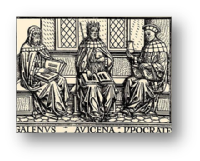Galen's Commentaries on Hippocrates' Epidemics: Edition and Translation of the Arabic Version of Books One and Two
Professor Simon Swain - Dr Peter E. Pormann - Dr Uwe Vagelpohl
This 3-year project will edit, translate and study the Arabic versions of Galen’s commentaries on Bks 1 and 2 of Hippocrates’ Epidemics. Two research assistants will carry out the bulk of the editing and translation, and Prof. Swain and Dr Pormann will join them in writing the studies which will form a key part of the publication arising from the Project. The Epidemics are among the most famous books of the Hippocratic corpus because they present the ‘case notes’ of practising physicians. Galen’s commentaries on the Epidemics survive complete only in the Arabic translation of Hunayn ibn Ishaq (d. 873). Hunayn was a leading court physician and wrote the first extant textbook of opthalmology. The famous introductory work of the late medieval Italian medical schools, the Isagoge, is a reworking of another of his books under the Latinized form of his name, Johannitius. He is particularly well known in the field of Greco-Arabic studies for his polished translations of Galen’s many writings.
The initial phase of our project, which has now received funding, will (a) edit and translate Galen’s Arabic commentaries on Epidemics 1 to gain experience of Hunayn’s technique by comparing the largely extant Greek text. This will enable us (b) to edit with confidence the commentaries on Bk 2 where the Greek is virtually all lost. At present Hunayn’s text is partially available in a German translation by Franz Pfaff in the Corpus Medicorum Graecorum series. Regrettably this is not altogether reliable, and moreover Pfaff did not use the best MS. We hope in future to be able to secure funds for further work to edit the remaining books of the Arabic Galen of the Epidemics commentaries.
The “Arabic Galen Commentaries” project will be of interest to historians of ancient and medieval medicine, scholars and the general public in Western countries and in the Middle East who pay attention to the common roots of medical and scientific learning in the Christian and Islamic worlds, and to all those who are interested in science and medicine as vehicles for the movement of ideas between cultures and languages.


